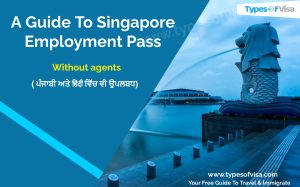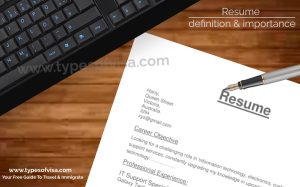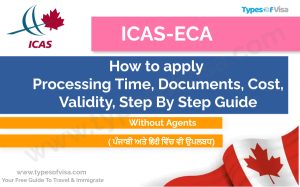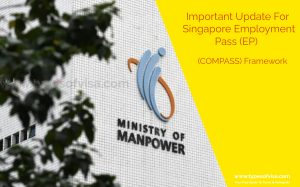Have you found the perfect job opportunity? You’ve sent your resume and wait for a call back… but it never happens. Sound familiar? Yes, that’s true for most of us. But how is that possible ?
Writing a perfect resume or cv is very important to get hired. The perfect resume is a formal document that serves to demonstrate a person’s professional background and skills. In this article we will try to explain some of the key points to write a CV in a perfect ways.
If you want to know more about the power of resume you can read our article what is resume.
6 Key sections must be included in the perfect resume
1. Contact details
A perfect resume should include your contact information at the top of your resume. Include your name, email address and mobile phone number. If possible, use a professional-looking email address that includes your first and last name. While it is not necessary to include your exact mailing address on your resume, you can include the city or general area in which you live.
Note: Don’t mention your full address in the first stage of applying a job. Since most of the employer doesn’t need your full address. But, it can helps to scammer to reach you.
Example:
John nelson
[email protected]
0029822922
Australia
2. Network Account
In this section you can include your network account. Like if you have any social account on LinkedIn or Meetup you can write here.
Example:
LinkedIn
linkdin.com/xyz
3. CV profile or summary
Write a short summary or personal profile below your contact information. In this section you can introduce yourself to potential employers and describe your skills, qualities, strengths, career ambitions and, characteristics. You can customize it to suit the requirements of different roles.
Note: Don’t use any complex words, try to make it simple. Employer is not looking for your vocabulary skills. Write this section short and aim to use 100 words or less.
4. Your Work experience
The next section will describe your work experience. Always write this section in Chronological order. Start with your current or last position. For each position, include your job title, employer name, and dates of employment. Also include your major responsibilities and major accomplishments. If possible, use numbers and percentages to measure your impact. Use short bullet points to complete this section and start each bullet point with an action verb.
This section is very important, so when you write this think twice. Always use some technical words that you in your skills. If you have a lot of work experience, limit this section to positions you have done in last 10 years. Use past tense in your previous work experience. Example, write maintained instead of maintaining.
Example:
IT Support Engineer
Company xyz
From 2018 to present
- Installation & configuration of windows and Mac OS problems.
- Maintenance and monitoring of computer networks and systems.
- Diagnosing and solving hardware or software faults (Windows and Mac).
- Responding to call-outs in a timely fashion.
- Maintaining coordination with the team members.
5. Education and qualifications
This section contains your education details. Again always write this section in Chronological order, starting with your most recent academic achievements. List any third level qualifications you hold, the name of the college or university and the year you were awarded. Then describe your high school education. If you hold a degree, just list the name of the school you attended and the year you graduated.
You no need to mention about your marks, just write here your percentage. If you don’t have much work experience yet, make the most of this section and focus on your educational attainment.
Example:
Master of Information Technology from University of South Australia (2018)
Bachelor of Information Technology at Victoria University Sydney (2016)
6. Your Skills
In this you have an opportunity to write your individual skills. List your hard skills, such as your fluency in different languages or your ability to use computer applications and digital tools. Also include any soft skills you have, such as the ability to communicate clearly, collaborate effectively or manage deadlines. Use short bullet points to describe your skills.
Most employers look for a combination of hard and soft skills when screening applicants. Be sure to edit this section to highlight any skills you have that are directly relevant to the position.
Example:
- Fluent in English and French.
- Familiar with social media.
- communication skills (written and verbal).
- problem-solving skills
Optional sections can be included in CV.
There are many other sections you can include in your resume. Consider including some of the following if they apply to you and you have space to include them:
Hobbies and interests: If you include your hobbies, focus on hobbies that are team-based, such as soccer or tennis. Also include any volunteer work you do in the local community or creative hobbies, such as writing or drawing.
Professional Certificates: If you archived any professional certification you write here, such Microsoft, cisco, and more.
Awards: You can include an awards section in your resume. Includes school leadership, academic or athletic awards, scholarships, and work-related awards
Some tips to write a perfect CV
Be honest: First and foremost always be honest. Always write those skills and qualifications that you have. Doing this can help you avoid questions you may not be able to answer during an interview.
Not much longer CV: Don’t write a longer CV. Your potential employer has not much time to read everything that your have written. Be focus on the main skills and try to write in shorter.
Use formal language: As your CV is a professional document. Always adopt a formal tone throughout and avoid using slang or jargon.
Write it easy to read: Make sure you use an easy-to-read font like Calibri, Arial, or Tahoma. Use a font size of 14 to 16 for headings, 10 to 13 for the general text.
Proofread it carefully: It is important to check your resume carefully. Such as Spelling mistakes, grammatical errors, and stylistic inconsistencies can make you look sloppy or stupid, and can cause recruiters to reject your application even if you have highly skills.
Send in PDF format: Always send your CV in PDF format unless an employer specifically requests in deferent format like doc. Since the pdf is the lock format, it doesn’t change its length or fonts in deferent devices.
Include a cover letter: Maximize your chance of success by including a well-written cover letter with your resume. Write it to meet the specific requirements of the job you’re applying for and use it to highlight the most important skills and attributes from your resume.
Print on white paper: If you are handing out hard copies of your resume, print it on good quality white paper. Print on one side of the page only and place your CV in an A4 envelope to avoid creasing the pages and the appearance of the document when it reaches the recipient.
IF you are not aware about the cover letter, you can read our article what is cover letter.
Can I use a template for a CV ?
Yes, you can use a template to write a CV, But, we don’t recommend to use a highly designed template for your perfect CV. As it contains your professional work experiences, so always use simple a template.
How long CV should be ?
Firstly, it depends on your experience and skills. Still we recommend perfect CV should be completed in two pages.
Should I put picture on my resume ?
A resume addresses your experience and skills in concise and professional manner, so it’s about knowing what to include in resume that is added value. For this reason, some of the countries’ recruiters need picture on your CV.
For more details about the picture on a CV, please read our article should I use a picture on my CV ?
Resume services
We know there are many resume templates are available on the Internet. But, always think twice to use them. Always write your resume your own. If you’re still confuse about your resume writing you can send us an e-mail and we help you to write it.















